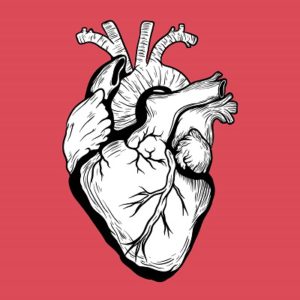 Everyone knows that the body won’t live without the heart. If the heart doesn’t beat for more than 3 minutes then brain cells begin to die. After 6 minutes other cells in the body begin to die from lack of oxygen that the blood supplies.
Everyone knows that the body won’t live without the heart. If the heart doesn’t beat for more than 3 minutes then brain cells begin to die. After 6 minutes other cells in the body begin to die from lack of oxygen that the blood supplies.
The heart is a pump. Just like the pump in the fish tank circulates water delivering oxygen to the water, and thus to the fish, the heart circulates the blood full of oxygen to the cells throughout the body.
On a very simple scale this pump can get clogged, break down or just plain need repair. The more you know and understand how the heart works the better you’ll be able to take care of the pump that keeps your body functioning and working.
Heart disease is a growing problem. People live fast-paced lives in a fast-paced society. They don’t pay attention to their stress levels, nutrition, rest, or exercise needs.
Our bodies are not machines that can be repaired in the shop while you drive around a rental. They are complex mechanisms that need time and care to stay in the best shape possible.
What is extremely important is that our bodies will attempt to repair themselves if given the necessary tools. Those tools are a balanced diet, adequate water, good amount of rest and exercise. According to the American Heart Association there are almost 2,000 Americans who die of heart disease each day. This number includes people who have all types of heart disease, not just coronary artery disease leading to heart attack.
Learning how the heart works will help you to stay out of those statistics.
The heart is a pump with an electrical system that helps it to fire between 60 and 80 times each minute, of every hour of every day. This amounts to between 86,000 and 115,200 beats each 24 hours. The heart is about the shape and size of your fist. It is located between both lungs and behind the breastbone (that bone in the center of your chest). The breastbone protects the heart muscle from injury and helps to maintain the structure of the chest cavity for the heart and lungs.
Blood enters the heart from two large vessels called the superior vena cava and the inferior vena cava. The superior vena cava drains blood from the head and shoulders while the inferior vena cava brings blood from the trunk and lower extremities. All of this blood flows into the right upper chamber or the right atrium.
When the right atrium contracts the blood flows through a valve and into the right ventricle. With the next contraction the blood flows out through the pulmonary vein where it flows through the lungs picking up oxygen and returns to the heart through the pulmonary artery in to the left atrium (left upper chamber of the heart). The next pump brings the blood into the left ventricle where it exits through the Aorta.
The heart pump is a muscle that also must be fed oxygen. It doesn’t pick up the oxygen while the blood is in the chambers but instead receives oxygen through the coronary arteries, which surround the heart. These coronary arteries are what we try to keep clean through a balanced diet, exercise, stress reduction, sleep and plenty of clean water.
When other small arteries become clogged or develop a clot part of a muscle may die and cause pain. Or the person may experience difficulty with walking when the blocked arterial supply is to the lower extremities. But when the coronary arteries, or arteries that feed the heart, become blocked the pump begins to die leading to damage to the heart muscle and a heart attack.
There are two main coronary arteries – the left main and right coronary arteries. The left main coronary artery divides further to two other arteries each supplying the heart muscle with life sustaining blood and oxygen.
The coronary arteries can become blocked by fats, triglycerides and the reaction to stress and poor nutrition. This blockage will result in pain with exertion (often called angina). This can progress to unstable angina when the chest pain occurs with less exertion and the coronary arteries become more blocked. A heart attack happens when very limited amount of blood can get through the arteries and the heart muscle becomes permanently damaged.
How the heart works to keep the blood pumping is a function of muscle contraction, electrical stability and oxygen supply to the heart pump. Without all three functions working perfectly the heart will falter and possibly fail. It is our responsibility to provide this 10 ounce pump the nutrition, rest, exercise and water it requires to keep our bodies functioning well for years.
RESOURCES
National Heart Lung and Blood Institute: How the Heart Works
LifeBeat: How Your Heart Works






